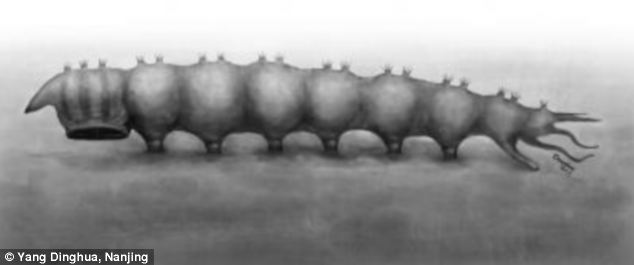

The Earth hosts a number of (rather terrifying) parasites. There is Cymothoa exigua, a sex-changing, tongue eating parasite. Then there is the Ophiocordyceps fungus, which creates “zombie” ants. And a host of other terrifying organisms that use the brains and bodies of other creatures in order to survive. Recently, scientists added a new parasite to this ever growing list.
In a fresh water lake in inner Mongolia, scientists uncovered a 165 million-year-old fossil of a fly larva. As it turns out, this tiny creature (it measures about .7 inches or 2 cm) is a parasite, coming fully equipped with a gigantic sucking plate attached to its body. The creature is known as “Qiyia jurassica.” The name comes from “Qiyia,” which means “bizzar” in Chinese, and “jurassica,” which refers to the Jurassic period (the period to which the fossils belongs). Currently, no other insect has been discovered that has such a huge sucking plate.

It seems that these creatures fed primarily off of salamanders. As you can see, the parasite’s feet look a bit like those of a caterpillar. The larva would use these feet to climb onto a salamander. Once it was sufficiently positioned, the parasite would attach itself to the salamander with its sucking plate, penetrating the thin skin in order to suck the creature’s blood.
Of course, this sounds terribly unpleasant; however, the process was not deadly. Although most parasites are uncomfortable and painful, only some actually kill their hosts. And as it turns out, Qiyia jurassica is not a killer. Scientists were able to effectively make so many of these determinations because the fossils that were uncovered were extraordinarily well preserved. This level of preservation is partially due to the fine-grained mudstone that are organisms were embedded in. Dr Torsten Wappler, of the Steinmann-Institut of the University of Bons, explains: “The finer the sediment, the better the details are reproduced in the fossils.”

And scientists didn’t just uncover well preserved fossils; they uncovered a lot of them. Why were so many of these larva found? Scientists believe that it is because, surprisingly, no fossil fish are found in China’s freshwater lakes of this Jurassic epoch. Yet, there are a plethora of fossilized salamanders, which have been found by the thousand. Since there are so many salamanders, which were the primary food source, it is not surprising that so many fly larva were found here. Along these same lines, fish are predators of fly larvae and usually keep them in check. Since there were no fish, the parasites were able to flourish.
Currently, scientists don’t have enough information to speculate on what the adults looked like or how they might have lived